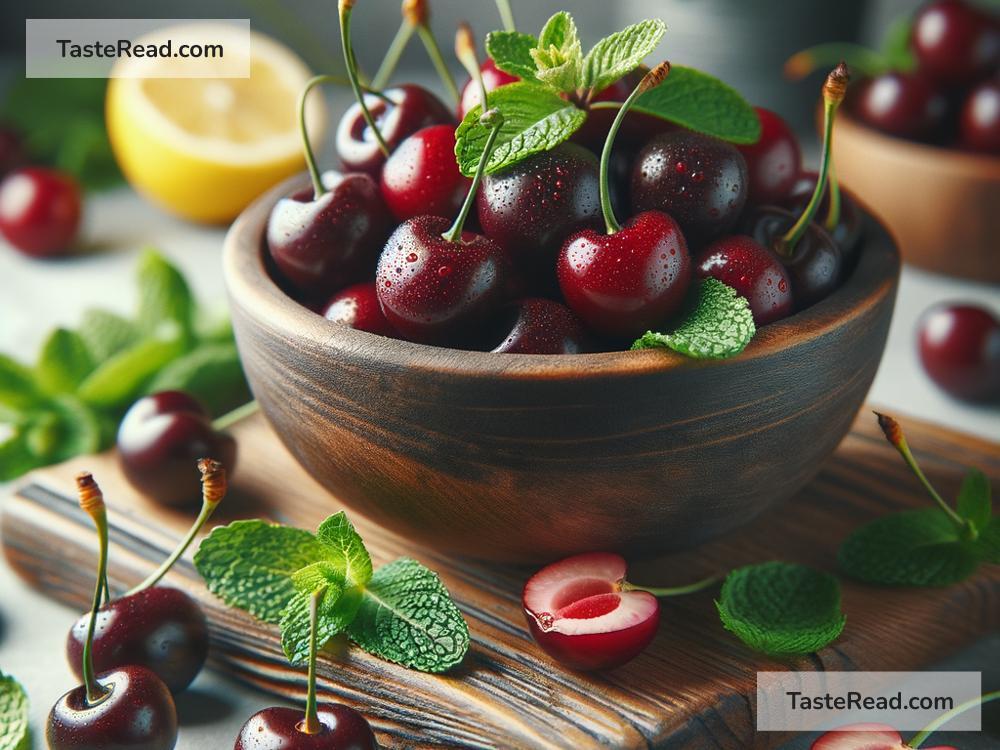Why Fruits Like Cherries Have a Tart-Sweet Balance
Fruits are nature’s candy, and cherries are no exception. These little red gems often surprise us with their delightful combination of sweet and tart flavors. But have you ever wondered why cherries—and many other fruits—strike this perfect balance? Is it just a coincidence, or is there something bigger at play? Let’s dive into the science and purpose behind the tart-sweet flavors in cherries and other fruits, explained in simple terms.
Sweetness Comes from Sugars
First, let’s talk about sweetness. Cherries taste sweet because they contain natural sugars like glucose and fructose. Sugar is a source of energy, not just for you when you eat it, but also for the fruit itself while it grows. Plants store energy in sugars, and fruits are one of the ways plants use that energy to attract animals—as we’ll get into later.
Fruits start out less sweet when they’re growing on the tree. As cherries ripen, the plant creates more sugars, breaking down starches and turning them into that perfect sweetness. This is why an unripe cherry tastes sour or bland compared to a ripe cherry—it simply hasn’t developed enough sugar yet.
Tartness Comes from Acids
Now let’s talk about tartness. Cherries have a distinct tangy taste because they also contain natural acids, such as malic acid or citric acid. These acids are responsible for the tart flavor in fruits, including cherries, lemons, and berries.
Acids play important roles in fruits. They help protect the fruit from bacteria and pests while it grows by making the environment less inviting for anything that could harm it. Imagine tartness as a little natural defense system for the fruit—it ensures the fruit stays healthy until it’s ready to be eaten.
Interestingly, as cherries ripen, their acidity usually decreases. This is why a ripe cherry tastes sweeter than an unripe one. However, cherries still maintain some of their tartness even at peak ripeness, creating a balanced flavor we love.
A Perfect Balance: The Sweet-Tart Combo
The real magic happens when cherries strike a balance between sweet and tart. This combination is appealing to humans and animals alike, but why?
Through millions of years of evolution, fruits like cherries developed this flavor profile to serve an important purpose: attracting animals to eat them. Fruits are the reproductive strategy of many plants. Inside fruits are seeds, and in order for the plant to grow more seeds elsewhere, animals need to eat the fruit, carry the seeds away, and help spread it. This is called seed dispersal.
Animals (including humans) are drawn to sweet flavors because they signal energy-rich food. Sugar is an excellent source of calories, and we’re naturally programmed to enjoy sweetness as a result. But too much sweetness can make a fruit overly cloying or unappealing. This is where tartness comes in. The acidic tang enhances the flavors, adds dimension, and makes the fruit much more exciting to eat.
Think about it—how much more interesting is a cherry compared to plain sugar cubes? The tartness adds a refreshing zing that balances out the sweetness, making cherries something you want to eat again and again.
Different Types of Cherries
Not all cherries have the same balance. Some cherries, like Bing cherries, lean heavily toward sweetness. They’re ideal for snacking because they satisfy your sweet tooth. Other cherries, like tart Montmorency cherries, are more tangy. These types are often used in baking or making jams, where added sugar balances the tartness.
This variation happens because different cherry varieties contain different levels of sugar and acid. The growing conditions, such as sunlight, soil composition, and temperature, also affect how sweet or tart a cherry will be. For example, cherries grown in sunny regions tend to develop more sugar because the plant uses sunlight to create energy.
Why Does This Matter to Us?
Understanding the tart-sweet balance of cherries gives us deeper insight into nature and the food we eat. When we bite into a cherry, we’re not just enjoying a snack—we’re experiencing the result of millions of years of evolution, chemistry, and biology working together.
This balance also has practical benefits. The tartness can make cherries refreshing and hydrating, especially in the heat of summer. The natural sugars provide quick energy, while antioxidants (which cherries are packed with) help protect your body. No wonder cherries are considered a superfruit!
A Universal Truth About Fruits
Of course, cherries aren’t the only fruit with a tart-sweet balance. Think of apples, oranges, and berries—they all follow a similar pattern. Nature has perfected the art of creating flavors that are not only delicious but also functional.
When fruits have both sweetness and tartness, they appeal to the widest audience of animals and humans. This means more seeds get dispersed, more plants can grow, and the cycle of life continues.
The Cherry on Top
In the end, cherries are a perfect example of nature’s genius. Their tart-sweet balance isn’t random—it’s carefully designed to be delicious and practical. Next time you enjoy a cherry, take a moment to appreciate this harmony of flavors. It’s more than just a tasty treat—it’s a masterpiece created by nature.


